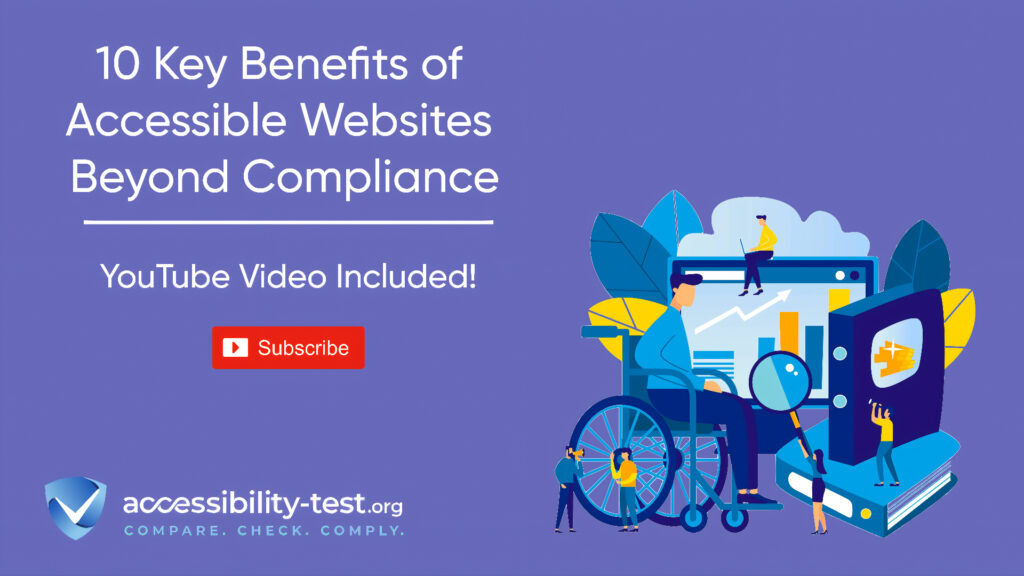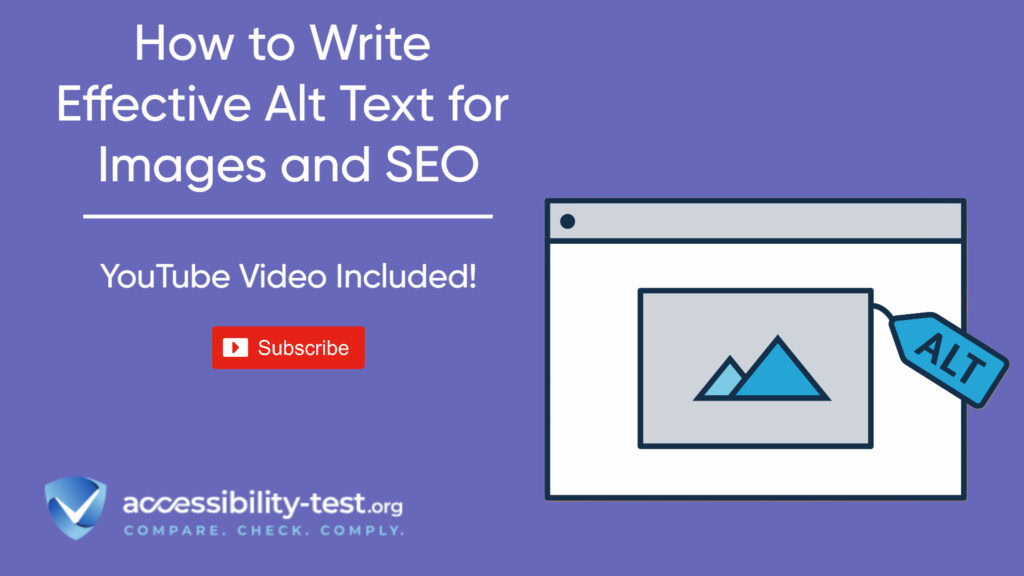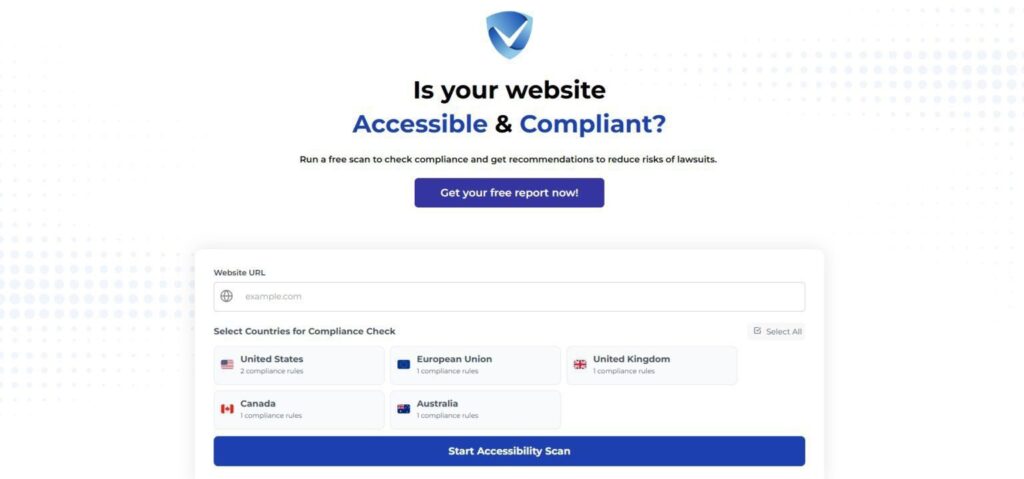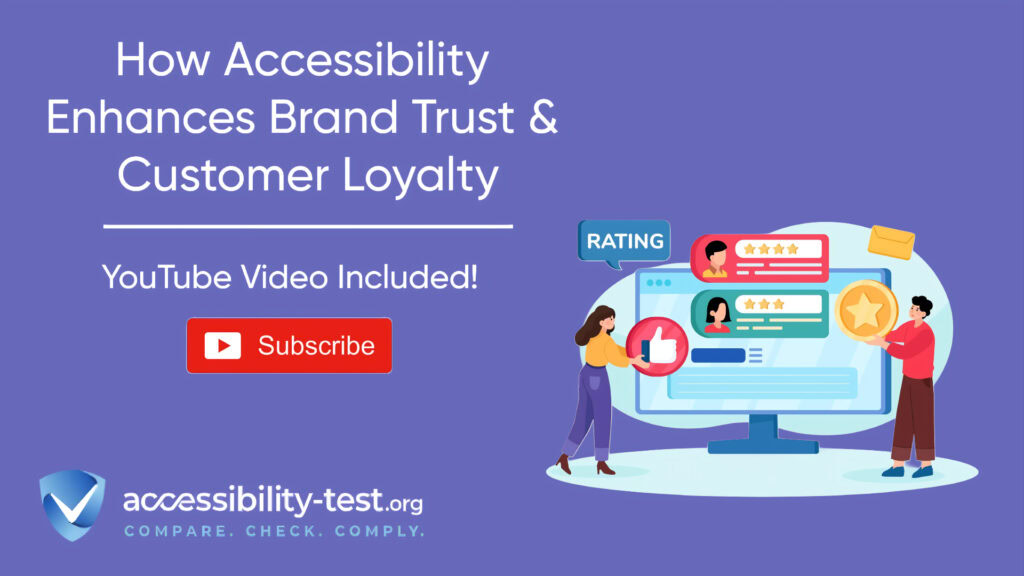Accessibility in Branding
Accessibility in branding is a multifaceted concept that goes beyond merely providing physical products to a diverse audience. In today’s increasingly digital marketplace, accessibility encompasses a wide range of experiences, including both online interfaces and customer interactions. The importance of accessibility cannot be overstated; it not only addresses the needs of individuals with disabilities but also plays a pivotal role in enhancing overall brand reputation and trust. As we navigate an environment that values inclusivity, brands that prioritize accessibility are better positioned to succeed.
In the context of branding, accessibility allows companies to engage with a broader demographic, thus fostering a more inclusive approach to their marketing strategies. Organizations that embrace this principle demonstrate a commitment to creating a welcoming and supportive environment for all users. This is particularly relevant in the age of digital transformation, where an increasing number of consumers rely on online platforms for goods and services. Ensuring that digital interfaces are user-friendly and accessible can significantly enhance brand affinity and loyalty.
Furthermore, the concept of accessibility extends beyond compliance with legal standards; it reflects a brand’s ethos and commitment to social responsibility. Companies that actively promote accessibility not only cater to individuals with disabilities but also appeal to a wider audience who values ethical business practices. In a competitive market, brands that successfully incorporate accessible design and communication strategies are often viewed more favorably by consumers, which leads to improved trust and credibility.
As we delve deeper into the relationship between accessibility and brand trust, it is crucial to recognize that prioritizing accessibility is not merely a trend; it is a fundamental shift towards a more inclusive future. By understanding and implementing accessibility in branding, companies can enhance their reputation, foster trust, and ultimately build stronger connections with their customer base, the complexities of accessibility litigation while fulfilling their obligation to provide equitable service to all users.

Understanding Brand Trust | Definition and Importance
Brand trust refers to the confidence that consumers place in a brand to deliver on its promises and provide quality products or services consistently. It is a crucial component of consumer-brand relationships, as it lays the foundation for customer loyalty and enhances overall business performance. When a brand earns the trust of its audience, it is more likely to foster lasting relationships, encouraging repeat purchases and a positive brand reputation.
The importance of brand trust cannot be overstated. Brands that establish trust can differentiate themselves in a competitive market, often leading to increased customer retention and advocacy. Trust influences consumer decision-making processes; customers are more inclined to choose brands they trust over those they do not recognize, ultimately impacting sales and market share. Furthermore, when consumers encounter transparent and reliable brands, they feel more secure in their purchasing decisions, which in turn cultivates loyalty over time.
Several factors contribute to building brand trust. Key among them is transparency, where brands openly communicate their practices, policies, and values to their audience. This transparency reassures customers that the brand operates ethically and values their trust. Another essential factor is reliability; brands must consistently deliver high-quality products or services that meet or exceed customer expectations. By ensuring accessibility in their practices—whether through customer service, product availability, or digital platforms—brands enhance their reliability and thus, their overall trustworthiness.
In an era where information is readily available and consumers are more informed than ever, establishing and maintaining brand trust has become increasingly important. Accessible practices not only strengthen brand reliability but also amplify trust. Brands that prioritize transparency and accessibility are better positioned to cultivate strong, loyal customer relationships, ultimately leading to sustained business success. web accessibility now to ensure that your platform is welcoming to all. Let’s make the digital world a better place, together.
The Role of Accessibility in Building Brand Trust
Accessibility initiatives play a crucial role in shaping brand trust, particularly in today’s consumer-driven landscape. When brands prioritize accessibility, they create an inclusive environment that resonates with a broader audience. This inclusivity is not merely a compliance issue; it serves as a strategic advantage that fosters emotional connections with consumers. Organizations that proactively implement accessibility measures can effectively communicate their commitment to all individuals, irrespective of their physical or cognitive abilities.
Moreover, a brand that champions accessibility demonstrates a consideration for diverse needs, which positively influences consumer perceptions. By actively engaging with various communities, brands not only enhance their reputation but also cultivate loyalty. Consumers tend to support brands that reflect their values and make an effort to support underrepresented groups. Hence, when brands embrace accessibility as part of their identity, they signal to potential customers that they are dedicated to equitable service and representation.
Additionally, the correlation between accessibility and consumer trust extends beyond immediate interactions. As brands implement accessible solutions, such as user-friendly websites and adaptive products, they are perceived as forward-thinking and responsible. These positive associations can lead to increased advocacy, as satisfied customers are more likely to share their favorable experiences. This word-of-mouth marketing amplifies brand visibility and trust in a competitive marketplace.
Ultimately, prioritizing accessibility not only aligns a brand with social responsibility but also generates substantial business advantages. Brands that position accessibility as a core tenet are more likely to succeed in building a loyal customer base that advocates for their values. By fostering an inclusive environment, companies can significantly enhance their brand reputation, leading to long-term benefits in both consumer trust and market positioning.

Case Studies | Brands Successfully Using Accessibility to Gain Trust
Accessibility has become a crucial component of modern business strategies, benefiting not only diverse audiences but also significantly enhancing brand reputation. Several companies have successfully integrated accessibility into their operations, demonstrating how these efforts foster trust among consumers.
One notable example is Microsoft, which has made great strides in ensuring its products are accessible to everyone, including individuals with disabilities. The company’s Accessibility Checker tool in Microsoft Office helps users evaluate the accessibility of their documents, while initiatives like the Xbox Adaptive Controller allow people with various physical limitations to engage with gaming. Microsoft’s commitment to inclusivity has garnered trust from customers who value diverse representation within technology.
Another strong case can be seen with Starbucks, which exemplifies brand dedication to accessibility through its mobile app. By implementing features such as voice commands and screen reader compatibility, Starbucks ensures that visually impaired customers can place orders independently. This approach has strengthened Starbucks’ reputation as a socially responsible brand, showcasing its commitment to diversity and inclusion within the customer experience.
Procter & Gamble has also illustrated the importance of accessibility in its marketing efforts. The company launched campaigns that explicitly promote products catering to individuals with disabilities, helping to normalize inclusivity in mainstream advertising. By showcasing people from diverse backgrounds and abilities, P&G has succeeded in building authentic connections with consumers, reinforcing trust and loyalty.
In another instance, the international airline Air New Zealand implemented accessibility-friendly measures in its booking system and boarding processes. The introduction of wheelchair assistance, clearer signage, and accessible options on its website reflects a commitment to customer experience that emphasizes trust and reliability.
These case studies exemplify how integrating accessibility into brand operations and marketing strategies not only promotes inclusivity but also serves to enhance brand reputation. Companies committed to these values likely earn consumer trust, opening avenues for long-term loyalty forms inclusive digital experiences that benefit everyone, reinforcing the importance of a long-term vision in their web strategies.
Customer Perspectives | How Accessibility Influences Trust
In today’s marketplace, customer trust is an essential component of a brand’s reputation. An increasing number of consumers prioritize accessibility in their interactions with brands, revealing that their experiences in this regard significantly shape their perceptions. Various demographics express differing levels of influenced trust based on accessibility, focusing on how brands cater to diverse needs.
For individuals with disabilities, accessibility plays a pivotal role in their trust toward brands. A survey revealed that accessible websites, services, and products significantly enhance their confidence in a brand. When businesses take the initiative to implement accessible practices—such as providing alternative text for images, ensuring screen reader compatibility, or eliminating navigational hurdles—these efforts convey a sense of reliability and commitment to inclusivity. Customers often report that positive experiences with accessibility lead them to view the brand as empathetic, understanding, and willing to accommodate their needs.
Conversely, negative experiences can drastically affect trust. Instances where consumers encounter significant barriers—whether it be a website that is difficult to navigate or customer service that fails to consider accessibility—often lead to frustration and disappointment. In many cases, such experiences result in diminished brand loyalty. Customers are likely to share these experiences with peers, amplifying the brand’s reputation in both positive and negative lights. A single accessibility oversight can quickly undermine a company’s image, showcasing how critical continued focus on accessibility is for cultivating trust among today’s consumers.
Furthermore, the younger generation, including Gen Z and Millennials, is especially attuned to issues of inclusion and accessibility. These consumers tend to favor brands that demonstrate a clear commitment to creating an accessible environment. As a result, leveraging accessibility not only enhances customer trust but aligns a brand with the growing expectation for social responsibility in the 21st century.tain compliance, they risk further legal action, perpetuating a costly cycle that can undermine their overall business model.

Accessibility as a Competitive Advantage
In today’s rapidly evolving marketplace, accessibility is emerging as a distinct competitive advantage for brands. As consumers become increasingly aware of the importance of inclusive practices, businesses that prioritize accessibility often find themselves ahead of competitors that neglect this critical aspect. Implementing robust accessibility measures not only complies with legal requirements but also enhances customer engagement and satisfaction, thereby fostering a positive brand reputation.
Accessibility, in its broadest sense, encompasses various dimensions, from physical access to digital services. Brands that address the diverse needs of their customers by ensuring that everyone, regardless of ability, can engage with their products and services, position themselves favorably in the minds of potential buyers. This commitment manifests as a powerful marketing strategy, effectively attracting a wider audience and creating brand loyalty.
Moreover, an increasing number of consumers actively seek brands that demonstrate a commitment to social responsibility, including accessibility. Studies reveal that inclusive practices can significantly affect consumer purchasing decisions, with many individuals expressing a preference for brands perceived as socially responsible. Businesses that recognize and embrace this trend stand to gain not just in customer numbers but also in public perception, thereby enhancing brand reputation and trust.
Furthermore, the evolution of technology presents brands with innovative tools to improve their accessibility efforts. By integrating user-friendly design principles, such as screen reader compatibility, alt text for images, and clear navigational structures, brands can facilitate a more equitable user experience. These enhancements, in turn, serve as good practices that demonstrate a brand’s dedication to accessibility, setting them apart in a crowded market.
Ultimately, accessibility represents more than just compliance; it offers brands a unique opportunity to differentiate themselves and build a lasting reputation. As the demand for inclusive practices continues to rise, those businesses that prioritize accessibility will undoubtedly reap the rewards of a loyal and diverse customer base.
The Intersection of Accessibility, Brand Values, and Trust
In today’s market, the alignment of accessibility with brand values such as diversity, equity, and inclusion has become increasingly vital. Brands are under scrutiny not only for their products and services but also for their commitment to social responsibility. Accessibility encompasses the idea that all individuals, regardless of their abilities or disabilities, should have equal access to products, services, and experiences. This concept resonates deeply with the broader values of diversity and inclusion, creating a heartfelt connection with consumers.
When brands authentically integrate accessibility into their operations, they demonstrate a commitment to treating all customers with equity and respect. Such an approach helps to build a strong foundation of trust between the brand and its audience. A truly inclusive brand actively seeks to understand the diverse needs of its customers, ensuring that all voices are heard and represented. This not only reflects a social consciousness but also enhances customer satisfaction, as users feel valued and acknowledged.
The relationship between accessibility and brand values also extends to the internal culture of an organization. Companies that prioritize accessibility within their workforce are more likely to foster an environment that promotes inclusivity and innovation. Employees who see their organization embracing these principles are often more engaged and motivated, directly impacting productivity and the overall brand reputation.
Moreover, a commitment to accessibility can meaningfully differentiate a brand in a crowded marketplace. Today’s consumers prefer to support brands that share their values, including a dedication to diversity, equity, and inclusion. By integrating accessibility initiatives, brands not only enhance their reputation but also cultivate a loyal customer base. In this way, accessibility serves as a catalyst for trust, encouraging customers to feel a deeper affiliation with the brand.
Challenges in Implementing Accessibility and Trust Issues
Integrating accessibility into a brand’s operations is not without its challenges, and these hurdles can significantly impact consumer trust if not appropriately addressed. One primary challenge is the varying degrees of understanding and commitment toward accessibility among team members. Organizations often find that different departments have disparate levels of awareness about accessibility standards and practices, leading to inconsistent implementation. This inconsistency can contribute to a perception of negligence, which can ultimately erode consumer trust.
Another challenge lies in financing the necessary adaptations. Enhancing a brand’s accessibility often requires investment in new technologies, design modifications, and staff training. Small to mid-sized businesses, in particular, may struggle with budget constraints, leading to reluctance in making these crucial improvements. If a brand is perceived as not investing in accessibility, it risks sending the message that it does not prioritize inclusivity, consequently damaging trust with consumers who value equitable access.
Among the most significant obstacles is the accessibility assessment phase. Many brands lack the tools or expertise needed to evaluate their current level of accessibility accurately. This can result in overlooking critical areas that require attention, compounding existing trust issues. If a brand fails to honestly assess and disclose its accessibility status, consumers may feel misled. Thus, transparency becomes vital in any accessibility initiative. Brands must openly communicate their challenges, efforts to improve, and progress made. Such transparency can mitigate skepticism and enhance trust, fostering a loyal customer base that values the genuine commitment to inclusivity. When brands prioritize and transparently address these challenges, they pave the way for enhanced brand reputation, leading to deeper consumer trust and loyalty.
Actionable Steps for Brands to Enhance Accessibility and Trust

In today’s diverse marketplace, brands must prioritize accessibility to cultivate trust among their audience. Implementing actionable strategies not only enhances the user experience but also fosters long-term relationships. Here are several steps brands can take to increase accessibility, thereby building trust and loyalty.
First, conducting an accessibility audit is essential. This process involves evaluating your website, products, and services against established accessibility standards like WCAG. Identifying areas that require improvement, such as text readability or navigation ease, is crucial for creating a more inclusive environment. Engaging with third-party accessibility consultants can provide valuable insights and recommendations for enhancements.
Next, brands should invest in training their teams. Understanding accessibility is vital for all employees, not just web developers or customer service representatives. Providing comprehensive training on inclusive design principles and the importance of accessibility can empower staff to contribute positively to the brand’s overall inclusive strategy. This knowledge encourages employees to think critically about how their roles impact accessibility.
Another significant step is to incorporate feedback from users with disabilities. Creating channels where customers can share their experiences and suggestions on accessibility enhances the iterative process of improving services. Actively responding to this feedback demonstrates a brand’s commitment to inclusivity and builds trust within the community.
Additionally, brands should ensure that their communication is clear and straightforward. Use plain language and avoid jargon to make content accessible to a broader audience. This practice not only increases comprehension but also reflects the brand’s commitment to transparency.
Ultimately, prioritizing accessibility is not merely a compliance issue but a strategic advantage. By taking these actionable steps, brands can enhance accessibility, build trust, and develop a positive reputation that resonates with diverse audiences. Such initiatives promote loyalty and reflect a brand’s values in fostering an inclusive society.
Run a FREE scan to check compliance and get recommendations to reduce risks of lawsuits

Don’t wait to take action—audit your site’s SEO-accessibility health today with our free tool! Identify gaps, implement fixes, and ensure compliance with the latest guidelines to dominate SERPs while creating an inclusive experience for all users. Take the first step toward accessibility success now!



